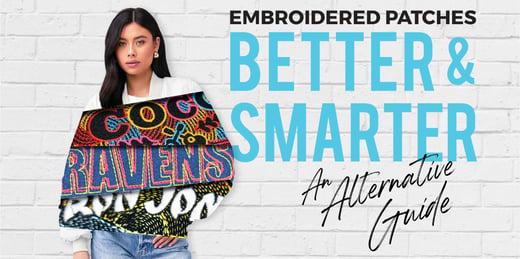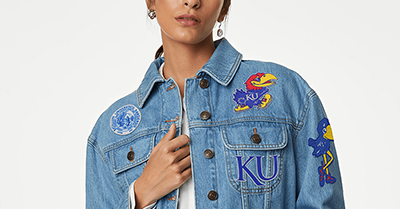5 SPECIALTY CHENILLE PATCHES YOU NEED TO KNOW ABOUT

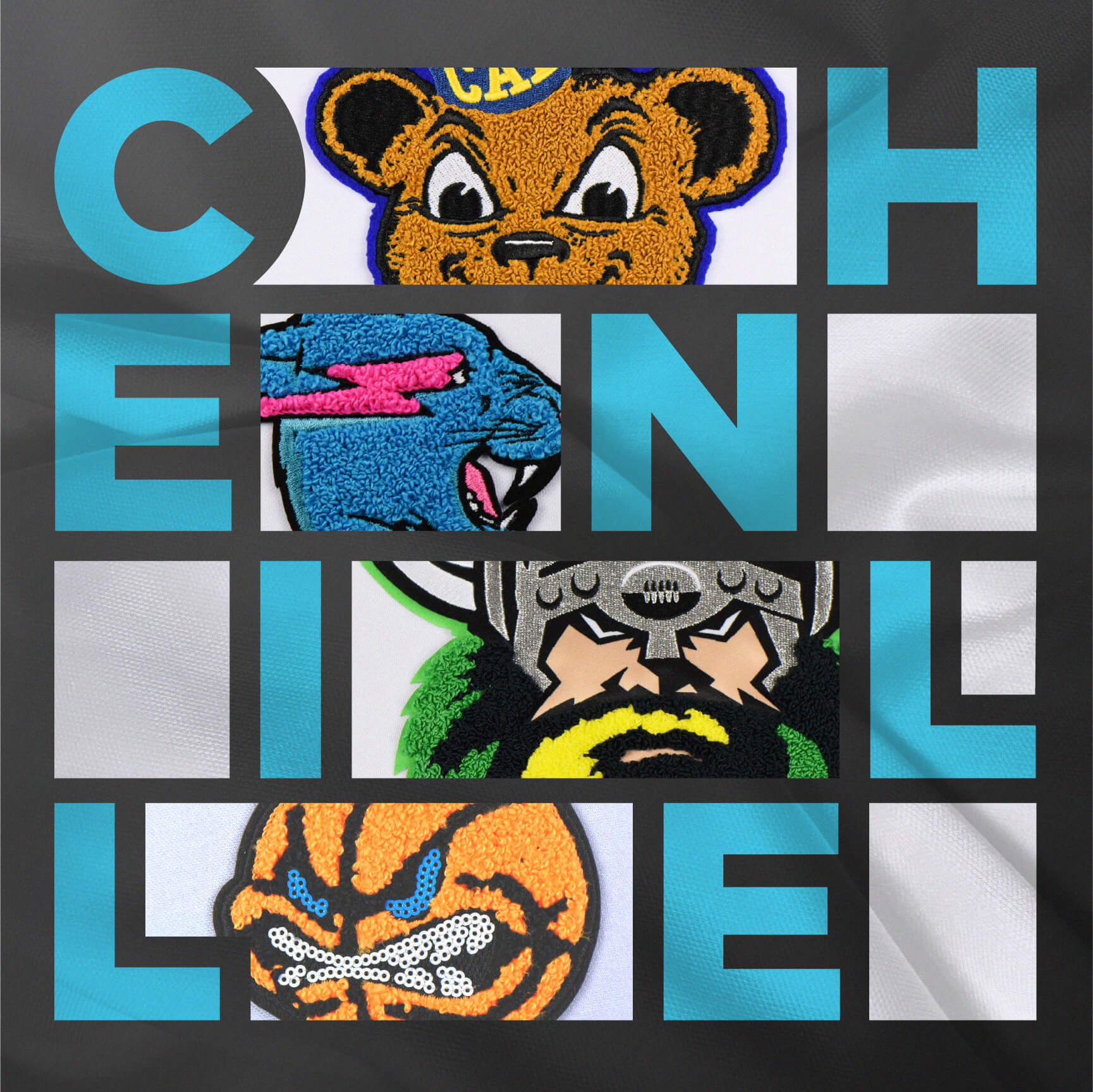
Chenille patches, you know, those fuzzy letters that all the high school athletes wore on their letterman jackets. Well, that’s not the only thing they are used for these days and chenille has come back around in the world of apparel decoration in a really big way. Chenille still looks great for vintage designs, but by using a few new twists and thread types it can be used for all new contemporary looks. Metallics, specialty stitched patterns, prints, variable heights, it’s all possible now. In this post we’ll explore the world of chenille patches, all the different styles available, and how they can be used to really bring a premium look and feel to any garment. Afterall, chenille has come a long way since your own high school days.
Download our comprehensive free Chenille Guide, complete with more details and high res photos of the techniques described in this post.
Understanding Chenille Patches
Chenille, originating from the French word for caterpillar, is crafted using a special looping embroidery technique that results in a tufted fluffy texture. These distinctive loops of thread that are chenille’s trademark can be shortened for a tighter weave or lengthened for a looser look. For even more variation, you can choose between threads with different thicknesses and finishes ranging from satin to matte. Throw in specialty stitch patterns, distressing techniques, different base materials, and you can start creating some really interesting stuff. Here are five of the most dynamic ways to use chenille in your patches.
1. Chenille with blended thread colors
You have probably already seen traditional chenille patches using a single color of thread to create a solid field of those distinctive loops. For a bolder look, select multiple contrasting thread colors to be pulled through the same embroidery needle to create a high contrast blend. Or tone it down a bit and use thread colors that are just a few shades away from each other to get a more subtle tonal shift in colors. When done correctly this technique can even be done to create a gradient effect by subtly transitioning bands of lighter thread colors into darker thread colors.

2. Metallic chenille
If you are looking for something with a little more shine, subbing in metallic thread is the way to go. This is the perfect way to take a classic technique and bring it into the here and now while still maintaining its original aesthetic. The way the light plays off the looped texture of the chenille really adds dimension to the decoration. A small note here, because most metallic thread is stiffer than traditional embroidery thread, the hand feel of this version of chenille will be noticeably coarser. To alleviate this, try blending in a few non-metallic threads of the same color so that it is a blend of both. The shine will still be there, and the feel will be a little softer to the touch.
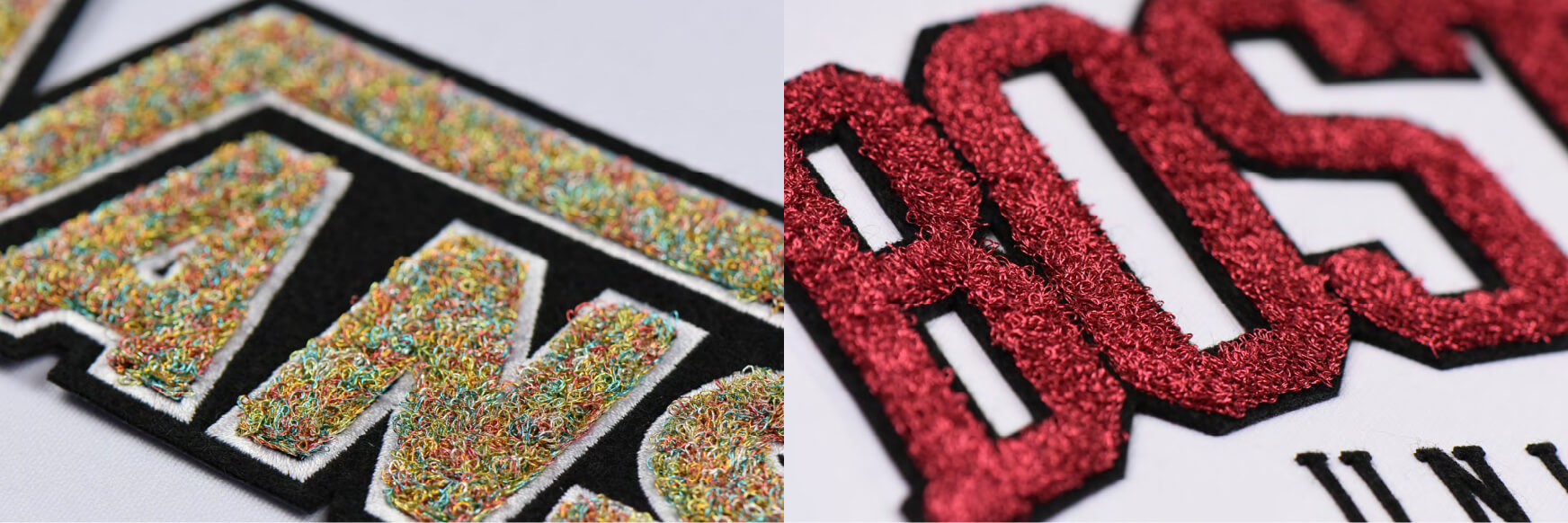
3. Brushed chenille
This is probably the most unique version of chenille on this list. Produced like the standard version but with a furry twist that looks great and feels even better. The fur texture of the chenille has a noticeable layered effect due to the overlapping strands of thread. It’s not ideal for complex images or logos but when applied to the right design it can really stand out from the crowd.

4. Chain stitched chenille
Chain stitched chenille is a bit of a technicality because it doesn’t have the traditional loops of regular chenille, but it does use the same machinery. Yarn like thread is interlocked together like the links in a chain to create a segmented line of embroidery. Typically, chain stitching is seen in more vintage looks due to the polyester thread that is commonly used which has a matte and even finish. However, embroidery and acrylic thread is also available for a shinier luster. Chain stitched chenille can also be paired with traditional embroidery like satin stitching to handle more detailed areas of a design.
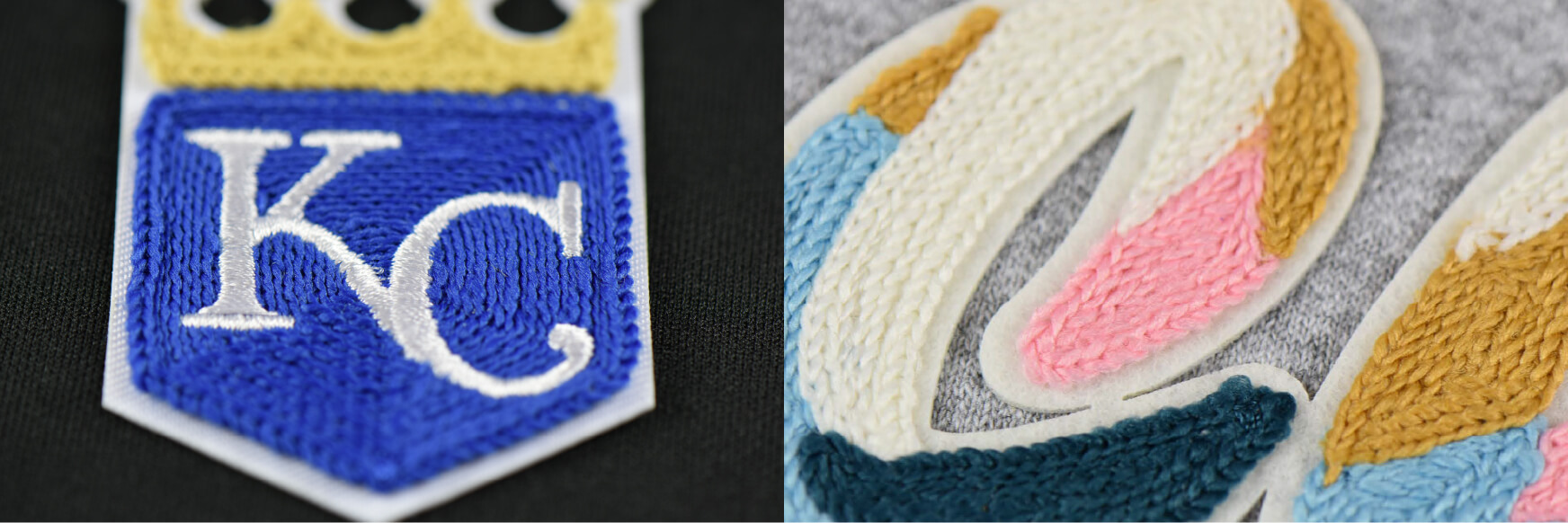
5. Printed chenille
Printed chenille is by far the newest and most trending of all the chenille types on this list. Using a special technique, we can saturate white chenille thread to achieve looks and patterns that would be impossible to make using regular chenille machines. You still get the great tufted feel of traditional chenille but now you can have multicolor gradients and patterns that are as subtly or distinct as you like. For best results, prints without sharply defined elements are recommended.
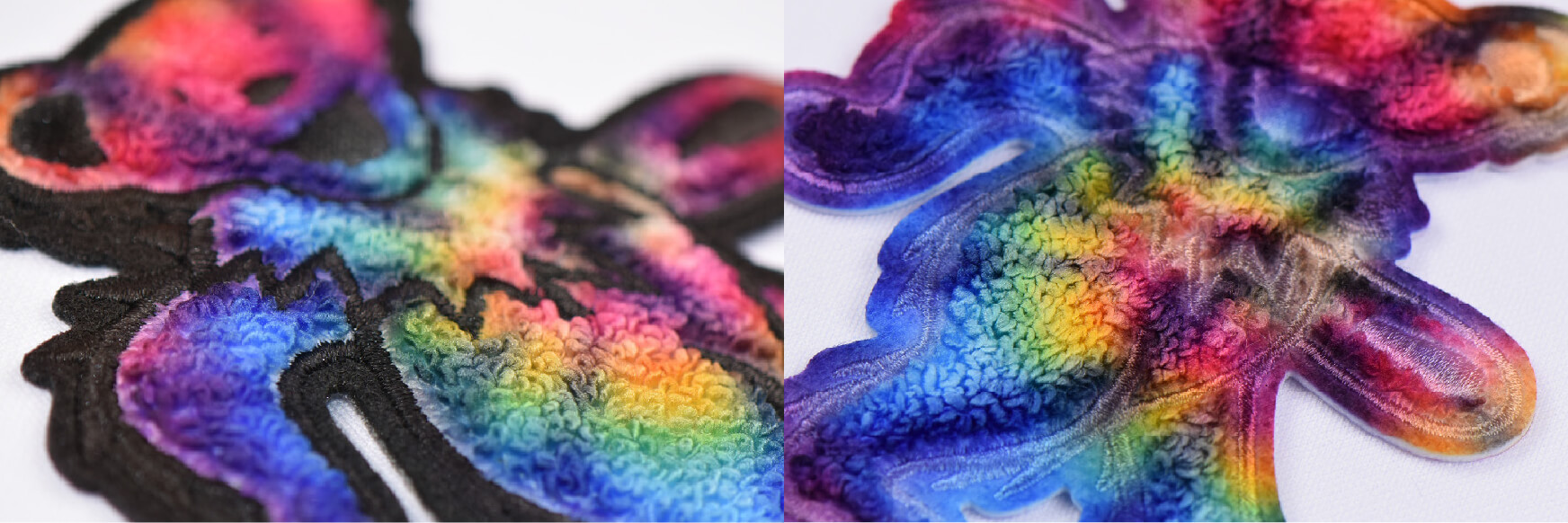
So, in the end chenille is already a good choice, but when you start to mix it up with these specialty techniques that’s when you take any garment you put it on to the next level. And remember, because everything at Lion Brothers is made to order, this list is just to get you started. We have a ton of other materials and looks that we can combine with the chenille on this list to really bring your next project to life. Send us your art and we’ll have a team of merchandisers and designers ready to show you just how good your brand can look in chenille. Contact us now and let’s get started!

Features of Custom Chenille Patches:
- Threads are PMS matchable. We can hit any color.
- Base materials are PMS matchable as well and include.
- Felt
- Twill
- Glitter Twill
- Velvet
- Available in heat sealable backing or sew down.
- Pre-production physical samples are available.
Tags:
Patches, Apparel Decoration, Chenille, Chenille Guide, Printed Chenille, Chain Stitching, Brushed Chenille, Metallic Thread
Jan 24, 2024 2:04:20 PM

